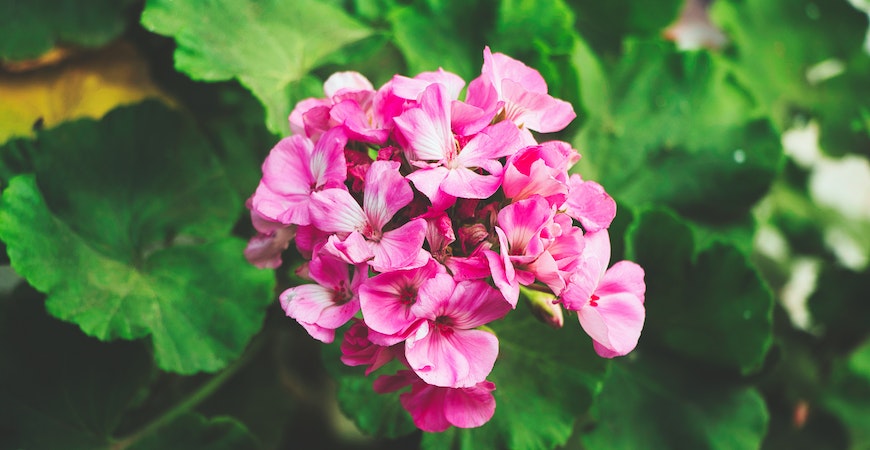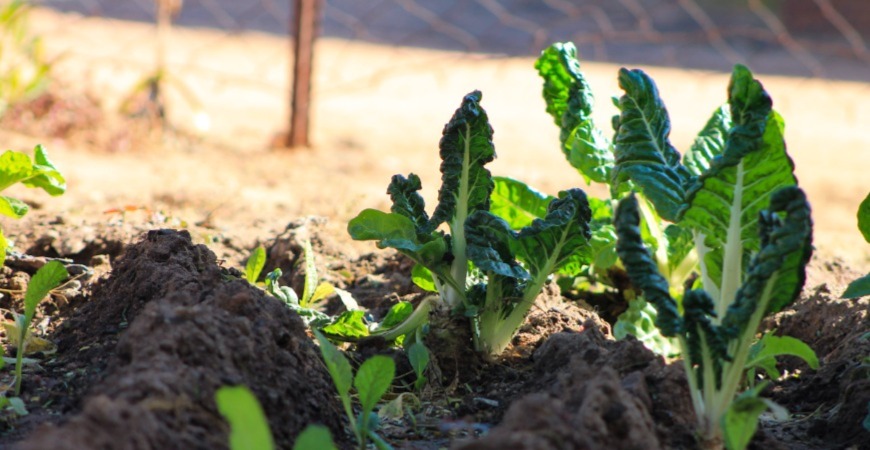
Shady Living: The Best Plants to Grow Under Trees
Nothing beats an afternoon relaxing in the shade of your favorite tree. But while humans are lucky to enjoy such a simple experience, many plants under trees struggle to grow in the shade.
Instead of throwing out the baby’s breath with the bathwater, plant flowers, shrubs, and even vegetables that will all thrive beneath a tree. Our guide on the best plants for under trees will walk you through everything you need to know to gain a vibrant, fragrant partner on those lazy summer days.
What Types of Plants Grow Best Under Trees?
Planting under a tree requires understanding how to get both garden pieces to complement each other. For instance, some trees — including dogwoods, magnolias, and maples — have shallow root systems that shouldn’t be disturbed.
That doesn’t mean you can’t place plants under those trees. But it does mean you have to be a little more aware of where their roots lie to not disturb them.
Generally, though, keep an eye for these types of plants to best ensure they’ll thrive in the shady life:
- Ferns
- Ground covers
- Native flowers and plants
- Shallow-rooted perennials
- Small bulbs
- Understory shrubs
- Other plants with shorter flowering periods
These plants are all well-suited for shade conditions and not likely to compete with your trees for essential nutrients. They also won’t distract from what’s probably your landscape’s centerpieces: the trees they sit beneath.
What are the Benefits of Growing Plants Under Trees?
Under-tree planting offers several benefits to your garden and landscape. Perhaps first and foremost on the list is the addition of natural beauty.
Some people prefer well-kept lawns with perfectly edged hedges. Others, though, may want a more naturalistic beauty with a woodsy or prairie vibe.
And adding a dash of wildflowers or ground covers won’t detract from your immaculately manicured lawn or garden. In fact, the contrast can help complement each other.
Many of these plants for under trees require little maintenance. Some water here, a little pruning there, and you’ll have a thriving natural garden.
This means if you don’t have time to spend in your garden or if you want to preserve your budget for other expenses, your yard can still enchant and induce envy.
Our Favorite Plants for Under Trees
With an understanding of what plants prosper beneath trees and why you should consider giving that shady spot over to them, let’s look at some of our favorite pants for under trees.
Astilbe

For those looking for a pop of color, it’s hard to go wrong with astilbe. Its blooms offer feathery bursts that range from the lightest pink to deep purple.
To plant, dig holes one to three feet apart that void the roots of the shade-providing tree. Each should be about a foot deep.
Then place the plant in the dug hole and backfill it with a mixture of soil and compost. An initial burst of water will help keep the soil moist.
Autumn Fern
Autumn ferns need shade to thrive. That makes them an ideal plant for under trees.
They also tend not to spread, helping them serve as an accent piece to your yard or garden. They’re a true four-season plant that can survive past the first frost of the winter season.
Additionally, their coppery, fall-like colors add richness to your landscape’s tableau.
They’ll thrive in acidic soil with an ample amount of organic material. Consider pairing them with apple, birch, or pine trees.
Boxwood
To the untrained gardener, a boxwood may appear to be a mere simple shrub. But the ability to prune and manicure it into a range of shapes makes it a versatile piece in any garden.
They tend to grow healthiest when receiving dappled shade in the afternoon. They also like neutral soil and regular watering.
These preferences allow you to plant them beneath cherry, crab apple, and dogwood trees.
Coral Bells
Also known as heucheras, these low-growth perennials offer vibrant purple-bronze leaves that sit perfectly beneath the shade of ash, walnut, and willow trees.
Beyond their bold leaves, coral bells are excellent additions due to their lack of maintenance. Regular watering the first year after planting is often enough to set them up for long-term success.
Cranesbill
Cranesbills are hardy geraniums that prefer shade and neutral soil. Their purple and pink flowers also bring a burst of color to the shady spots in your yard.
Like coral bells, cranesbills are typically low-maintenance garden additions. They really only need water when the soil dries.
Speaking of soil, they prefer slightly acidic to neutral soil that drains well. Their colors and temperament complement ash, boxwood, and a variety of fruit trees.
Lungwort
Lungwort doesn’t invite particularly attractive images of under-tree plants. Yet, these herbaceous perennials and their pink-violet bell-shaped flowers add a distinct, vibrant feature to your yard or garden.
When planting them beneath trees, make sure they get regular watering. However, too much water can also lead to root rot.
They prefer neutral-to-alkaline soil that’s rich in organic material. Lemon, lilac, and pecan trees are all suitable partners.
Spinach (and other Leafy Greens)
If you’re looking for something edible to add to your natural garden, consider spinach and other leafy greens. Planting these plants beneath deciduous trees allows them to receive sunlight when they need to grow and shade when they need to spread.
Spinach tends to do best in well-draining soil that’s slightly acidic to neutral. To keep the edible theme going, consider planting them beneath lemon, orange, peach, or pear trees.
Under Tree Planting Tips
Any time you plant under a tree, the goal is to keep both pieces of greenery alive and thriving. After all, damaging a tree to support shady growth doesn’t make much sense.
With that said, here are some general tips to help keep both your shade-producing tree and shade-loving plants healthy:
- When digging around a tree’s roots, use a trowel or digging knife instead of a shovel.
- Starting with smaller plants will give trees less of a “shock” when they start sharing nutrients and water.
- It’s better to go deep than wide with plant varieties. That is, stick with a few plants and plant multiples instead of diversifying growth.
- You’ll likely find soil drying out faster with tree and plant roots soaking it up. Plan on giving extra watering during drier periods.
- To ensure everyone’s getting the nutrients they need, apply mulch or compost every year.
Create A Bold, Natural Garden With Under Tree Plants
Finding plants that prefer shade can turn a plain yard into a vibrant, lively one. The goal is to find plants that complement the trees instead of combating them and ensuring everyone gets the water and nutrients they need.
For a healthy, thriving garden all year round, bookmark AskWetAndForget.com right now!














